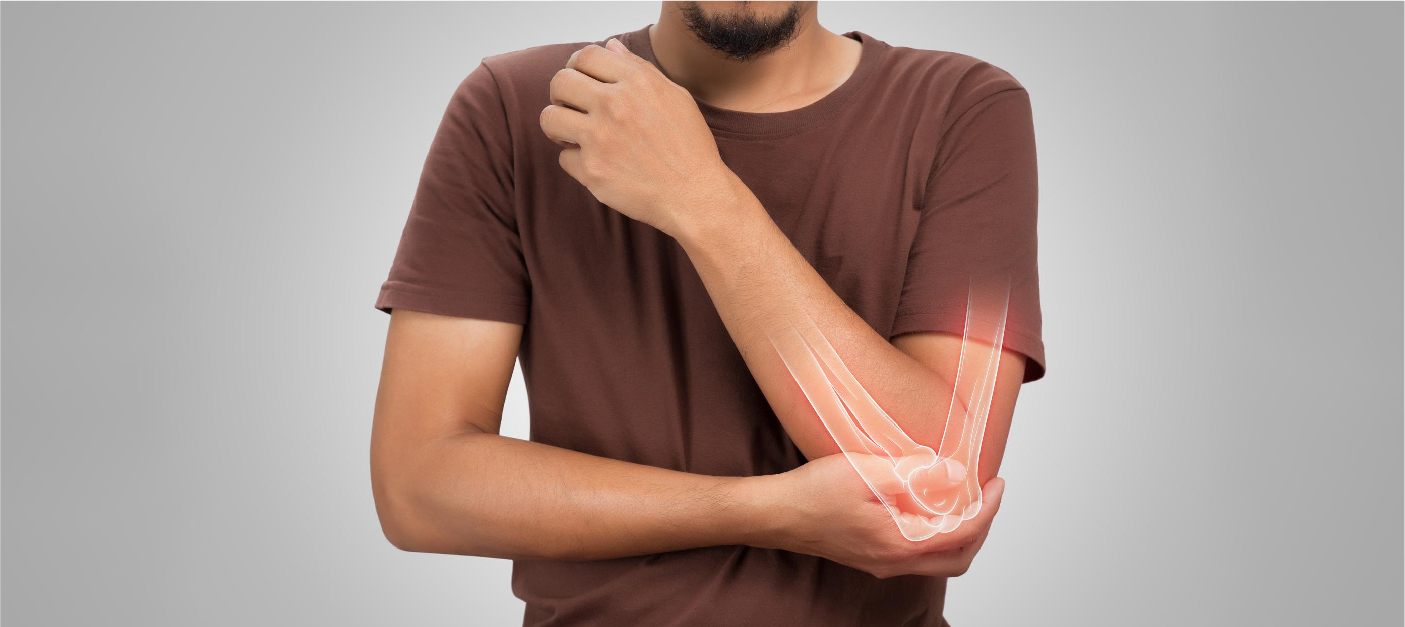
Elbow arthroscopy is a technique used to diagnose and treat problems within the elbow joint. Healthcare providers can use arthroscopy to visualize the elbow anatomy in great detail. Elbow arthroscopy procedures can also ease symptoms and restore elbow function while requiring fewer incisions, less pain and faster recovery than traditional (open) surgery.
The success rate of elbow arthroscopy depends upon the severity of the injury, symptoms you experienced, duration of the symptoms, and the patient's health status.
An elbow fracture is a fracture at the tip of the elbow occurring as a result of trauma such as a direct blow, falling on the elbow or falling on an outstretched hand. Elbow fractures are quite common and are especially seen in children. The American Academy of Orthopaedic Surgeons estimates that around 10% of all bone fractures affecting children are elbow fractures.
Also Read: How much does a shoulder replacement cost in Delhi, India?
The following are the symptoms associated with elbow fracture:
Also Read: Top 5 Shoulder Exercises At Home: Relieve Pain And Increase Flexibility
Your orthopedic doctor will ask for a detailed history regarding the symptoms and duration of symptoms you are experiencing. They will conduct a physical examination to check tenderness on touch, check the skin for any cuts or incisions from bone fragments, check the pulse at your wrist to assess the blood flow and they will check the extent of motion. In addition to this, your doctor will ask you to perform certain diagnostic tests such as:
The treatment for elbow fractures depends upon the severity of the injury and the symptoms you are experiencing. Following are the ways to manage elbow fractures:
Non-surgical treatment is chosen for the management of a stable non-displaced fracture(bone is broken but it is still in the correct position). The following are the non-surgical treatment methods:
Surgical treatment is preferred for the management of displaced fractures(Bone has moved out of place). In these types of injuries, surgery is required to keep the bone back in position and to promote healing. The following are the surgical methods:
Also Read: Cost Of Shoulder Arthroscopy in Delhi, India
The recovery of elbow fractures depends on the extent of the injury. Most elbow fractures require a cast or splint for at least three to six weeks. Many people can return to normal activities in approximately four months, although full healing can take a year or more.
Elbow arthroscopy is a technique used to diagnose and treat problems within the elbow joint. Healthcare providers can use arthroscopy to visualize the elbow anatomy in great detail. An elbow arthroscopy helps to treat certain elbow conditions (like infections, synovitis, osteoarthritis, loose bone and cartilage, permanently tensed muscles, rheumatoid arthritis, and adhesions) and elbow injuries (like elbow dislocations, elbow fractures, Pitcher’s elbow, and Tennis elbow).
Elbow arthroscopy helps to heal elbow fractures and inflammations as well as to improve mobility.
Following are the conditions in which your surgeon may recommend elbow arthroscopy:
The following are the steps in the elbow arthroscopy procedure:
If the motivation for the treatment is correct and the surgeon is knowledgeable in elbow arthroscopy, the procedure is highly successful. Almost all patients will see a clear benefit after surgery.
The most successful arthroscopic intervention for the elbow is the removal of isolated loose bodies, which has an 89% success rate.
Elbow arthroscopy is a safe, effective way for healthcare providers to examine the joint and surrounding tissue. It helps in the management of less severe elbow fractures. Surgeons also utilize elbow arthroscopy to ease symptoms and restore elbow function. As it is a minimally invasive procedure that requires fewer incisions, you have an easier recovery, so you can get back to work and play faster.
Experience personalized care in joint restoration with Dr. Ishwar Bohra, a senior orthopedic and joint replacement surgeon in Delhi. Book your consultation today.
Q: Is elbow arthroscopy painful?
A: Depending on the extent of your surgery, you may experience pain for a few weeks afterwards, which can be relieved by taking painkillers. applying ice packs, elevating the arm, and taking adequate rest will help you to control pain and swelling.
Q: Can I lift weights after elbow surgery?
A: Your doctor may advise you not to lift anything heavier than one pound for the first twelve weeks, and that you avoid lifting anything heavier than five pounds after recovery. You may also need to wear the sling every night for at least the first month. You will most likely need to avoid contact sports following surgery.
Q: Does an elbow fracture pain on touch?
A: The fractured elbow causes tenderness, discomfort, or numbness to the touch. The elbow may feel tight and rigid. It would be tough to extend and rotate the elbow.
Staying abreast with the latest information is the best way to combat diseases in early stages and live a healthy life. Read the latest news & updates here to learn about the recent advancements in joint care and therapeutics.


